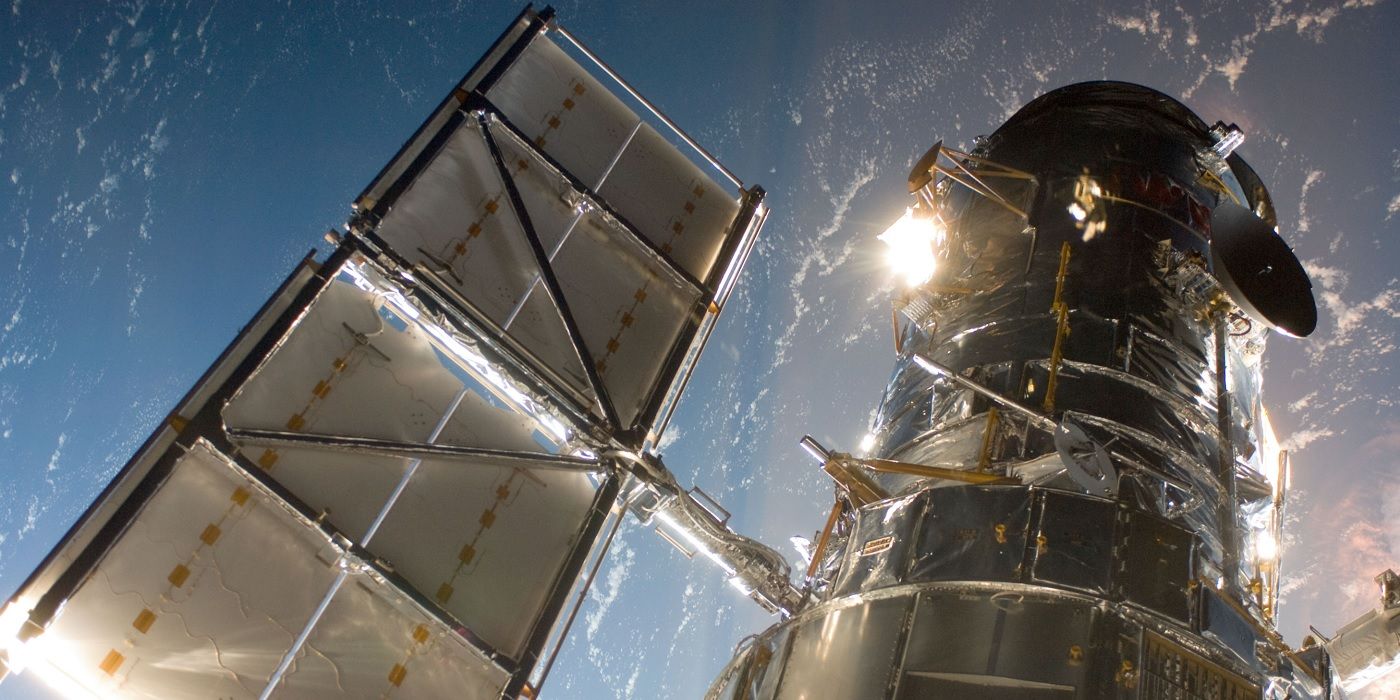
Most of the pale, white objects sprinkled around the body of M82 that look like fuzzy stars are actually individual star clusters about 20 light-years across and contain up to a million stars. The clusters in the clumps can only be distinguished in the sharp Hubble images. These, in turn, congregate by the dozens to make the bright patches, or "starburst clumps," in the central parts of M82. In M82, young stars are crammed into tiny but massive star clusters.

The fierce galactic superwind generated from these stars compresses enough gas to make millions of more stars. The resulting huge concentration of young stars carved into the gas and dust at the galaxy's center. Throughout the galaxy's center, young stars are being born 10 times faster than they are inside our entire Milky Way Galaxy. The galaxy is remarkable for its bright blue disk, webs of shredded clouds, and fiery-looking plumes of glowing hydrogen blasting out of its central regions. This mosaic image is the sharpest wide-angle view ever obtained of M82. X-ray: NASA/CXC/UCL/W.To celebrate the Hubble Space Telescope's 16 years of success, the two space agencies involved in the project, NASA and the European Space Agency (ESA), are releasing this image of the magnificent starburst galaxy, Messier 82 (M82). The Smithsonian Astrophysical Observatory in Cambridge, Massachusetts, controls Chandra's science and flight operations. NASA's Marshall Space Flight Center in Huntsville, Alabama, manages the Chandra program for NASA's Science Mission Directorate in Washington. The authors on the paper are William Dunn (UCL), Graziella Branduardi-Raymont (UCL), Ronald Elsner (NASA's Marshall Space Flight Center), Marissa Vogt (Boston University), Laurent Lamy (University of Paris Diderot), Peter Ford (Massachusetts Institute of Technology), Andrew Coates (UCL), Randall Gladstone (Southwest Research Institute), Caitriona Jackman (University of Southampton), Jonathan Nichols (University of Leicester), Jonathan Rae (UCL), Ali Varsani (UCL), Tomoki Kimura (JAXA), Kenneth Hansen (University of Michigan), and Jamie Jasinski (UCL). They plan to find out how the X-rays form by collecting data on Jupiter's magnetic field, magnetosphere and aurora using Chandra and ESA's XMM-Newton.Ī paper describing these results appeared in the Maissue of the Journal of Geophysical Research. The scientists used that data to pinpoint the source of the X-ray activity and identify areas to investigate further at different time points. The impact of the CME on Jupiter's aurora was tracked by monitoring the X-rays emitted during two 11-hour observations. The left-hand panel reveals the X-ray activity when the CME reached Jupiter, and the right-hand side is the view two days later after the CME subsided. In these images, X-ray data from Chandra (purple) have been overlaid on an optical image from the Hubble Space Telescope. These composite images show Jupiter and its aurora during and after a CME's arrival at Jupiter in October 2011. This new study found that the interaction at the boundary triggers the X-rays in Jupiter's auroras, which cover an area bigger than the surface of the Earth. These events compress Jupiter's magnetosphere, the region of space controlled by Jupiter's magnetic field, shifting its boundary with the solar wind inward by more than a million miles. Sometimes, giant storms, known as coronal mass ejections (CMEs), erupt and the winds become much stronger.

The Sun constantly ejects streams of particles into space in the solar wind.

This result is the first time that Jupiter's auroras have been studied in X-ray light when a giant solar storm arrived at the planet. Solar storms are triggering X-ray auroras on Jupiter that are about eight times brighter than normal over a large area of the planet and hundreds of times more energetic than Earth's ' northern lights,' according to a new study using data from NASA's Chandra X-ray Observatory.


 0 kommentar(er)
0 kommentar(er)
